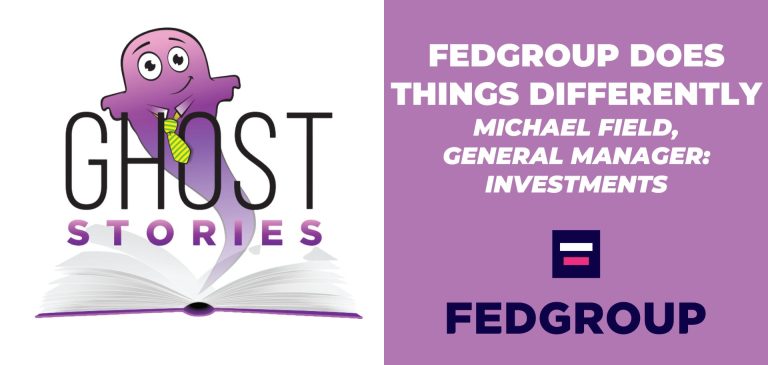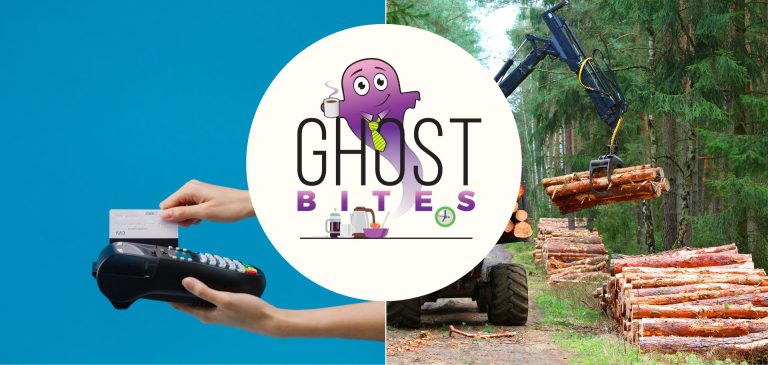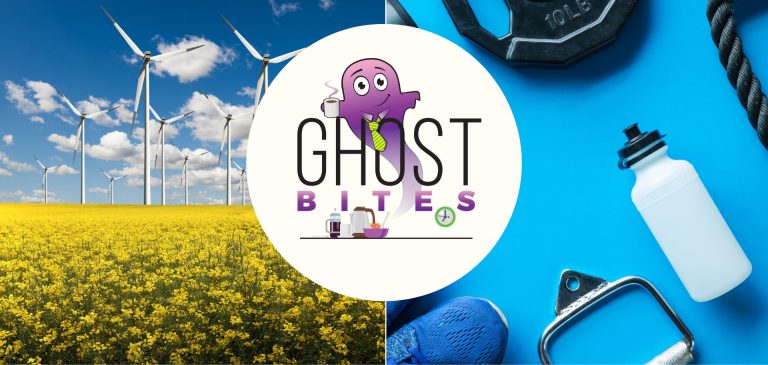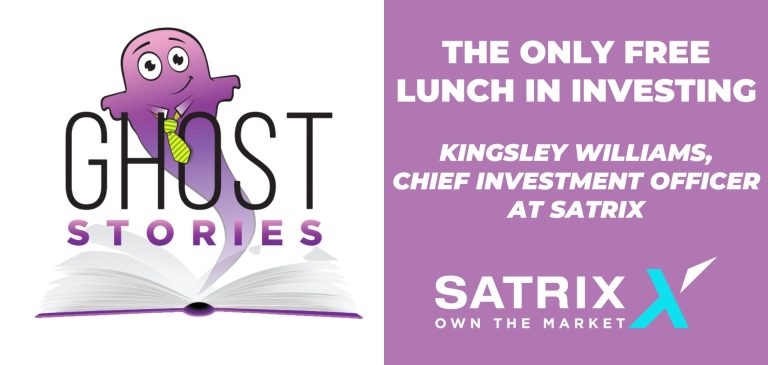Listen to the show using this podcast player:
Does Fedgroup think differently about preserving and growing wealth for their clients? Perhaps their position as one of the largest beekeepers in the country answers that question. In this show, Michael Field (General Manager: Investments) joined me to unpack the way Fedgroup thinks about investing.
The JSE has a small (and shrinking) pool of assets being chased by deep pools of capital. Alternative assets can offer inflation protection, diversification and stability in a portfolio that still includes exposure to traditional asset classes like equities and bonds.
After all, when the market can throw a lot of red numbers at you on your brokerage account in a tough year, having assets that are focused on stability and inflation protection can make all the difference.
For those who prefer to read, the full transcript of the show is available further down.
And remember, this podcast is for informational purposes only. Nothing in here should be taken as advice.
Download Fedgroup’s corporate profile here

Full transcript:
The Finance Ghost: Welcome to this episode of the Ghost Stories podcast, and it’s going to be a super interesting one today. Although I feel like I always say that, because we always have such good guests on the show and such great topics to unpack. Today we’ve got Michael Field, who is the General Manager: Investments at Fedgroup. If you read your Ghost Bites for a period of a couple of months, you would have seen the Fedgroup branding on it, you might have seen some of the articles placed in Ghost Mail unpacking some really interesting and relevant investment topics. Michael, I think today we’re going to bring a few of them together and just use this podcast as a really good way for you to get Fedgroup’s thinking out there from an investments perspective and a portfolio construction perspective. I think you guys do have some pretty interesting approaches and you do think quite differently to a lot of other people in what you do. Welcome to the show and I’m excited to do this with you.
Michael Field: Thanks so much for having me. Looking forward to it.
The Finance Ghost: Let’s start with this concept of capital preservation and what it really means. I think we very much live in a world right now where inflation is a consistent theme. It hasn’t exactly disappeared, not that it ever really disappears in South Africa, but this higher-for-longer interest rates story just seems to be gaining momentum at the time of recording. There are some big US data releases coming out this week. We’ll see what that means for the Fed, but on the whole, it’s very much been a narrative of higher interest rates for longer and the rest of the world is largely compelled to follow what the Fed is doing, otherwise it causes all kinds of other problems for their currency and everything else.
From a capital preservation perspective, in this high inflation, high interest rate type environment, is it enough to actually just preserve the nominal value of your capital? I have a million rand today, and I just want to make sure that I still have a million rand next year or a little bit more from a savings account. Or does capital preservation actually mean something different?
Michael Field: In short, it’s probably better phrased as value preservation. As you said, we’re in really strange inflationary times. I think it’s a bit of an odd one where Covid has kind of synced up everyone’s interest rate cycles. And as you say, we are totally beholden on what’s happening in the likes of the US. We were actually having a discussion the other day, and remember we were sort of chatting around – when was it? Almost a year and a half ago – and everyone was expecting that in January 2023, rates were going to start coming down.
We sit so much further down and we’re still there. So I think inflation is going to be with us a fair while longer. It’s about preserving value.
The Finance Ghost: In terms of preserving value, is that a nominal thing? I have a million rand. I still want a million rand. Or what does it actually mean? Preserving buying power and actually making sure that down the line, you’re not worse off in two or three years time than you are today?
Michael Field: I think it’s about buying power. We tend to operate in very low volatility, or certainly that’s how we look to place our investments. I think there’s an element of that asymmetry: if you lose 10%, you’ve got to gain 11% to get back to where you started. So I think that’s maybe another angle of it; preserve your buying power, make sure you’re still going to get what you used to get.
And I think that extends beyond official inflation. It depends on who the individual is and how they experience inflation. Obviously, food is something that hits all of us, but depending if you’re looking to buy a car or get into the housing market, whatever it might be, how each person experiences that cost and their personal inflation is really what it’s about.
The Finance Ghost: I always look at cars and I always think if people actually did the maths – you’re not just paying off the car you have right now. Theoretically, you should also have a little sinking fund for the next car you want to replace this one of an equivalent level, and that’s why you’re seeing this proliferation of Chinese brands on South African roads because people who bought a 3 Series seven years ago absolutely cannot replace it with a 3 Series today. You need a million bucks. And that wasn’t the case seven years ago. So to your point, inflation is very specific to individuals. But you’ve also touched on an important point there, which is don’t lose money. And it sounds so obvious; no one wants to lose money. If it was so easy, then no one would ever lose money. And I guess that’s a big part of the thinking. It is a bit of risk aversion, I suppose. Loss aversion. Would you say that’s something that is quite baked into your thinking at Fedgroup?
Michael Field: We’ve obviously got a broad range of products, but where we started back in 1990 was a fixed rate product. That was the first product we ever offered, and I suppose a lot of that is carried through in our thinking. For us, there’s that broader element as well. We like to think about some of the different elements when it comes to investing, and sometimes that also has to extend to the individual and almost some of those psychological factors for them. Investing 101 is don’t sell the dip. But we know that it’s avoiding that irrational fear and those types of fears.
Where we can construct products and help people to get past some of their own fears and some of those sorts of things, it’s an unconventional way of helping people to meet their outcomes. It’s not simply about what is that underlying investment doing, although that’s obviously a very important factor. What are some of the other things you can build in there that are going to help people get to that outcome?
The Finance Ghost: In your articles and in some of the stuff I’ve read coming out of Fedgroup, there is a little bit of a bearishness around South African equities in general, and I’d like to unpack that a little bit with you – where that’s coming from and what makes you feel that way and how you think about this. Are South Africans really being paid a premium for the risk they are actually taking by holding South African equities? Obviously it is a cyclical thing. So it’s one of those classic stories where, depending on your starting point and your end point, you can come up with five different answers to suit a specific thing. But on the whole – because I actually share a lot of that viewpoint – is around some general bearishness, around SA equities I do most of my stock picking, to be honest, is offshore. There are obviously some gems on the local market which are well worth owning, in my opinion. But a lot of my equity exposure does sit outside of South Africa for a whole lot of reasons. I’m keen to understand your bearishness around SA equities as an asset class in general.
Michael Field: Sure. So I think that there’s quite a few elements which almost individually wouldn’t necessarily paint the same picture, until you start to stack them up. Maybe to state the obvious, we’re talking about listed equity. That is where we have that more bearish stance.
I think some of it has got to do with the nature of running equities on a larger scale. Particularly if you look at some of the factors in the South African economy, there are more investable assets in terms of the likes of retirement funds in that then almost the scale of the JSE, particularly if you look at so-called SA Inc., it’s actually a really small pool of assets. If you want to start getting a little bit more creative in some of those stock picks, there’s not that much room to maneuver and take some positions. So we see that sort of distorting some of what’s going on the JSE.
Another very different element of it is, no news to anyone – South Africa has got some challenges. What we see is that smaller companies are a bit more nimble and they’re actually, in our view, doing better than many of the large listed. and I think maybe we’ll come back to it later. But where we play in a lot of the so-called alternative space, we’re seeing better value there than in some of the listed equities. To be clear, our stance is not anti equity, is not that we’re advocating for people not to be holding equities. Absolutely. All our multi asset funds are holding substantial equity positions onshore and offshore.
It’s that we think for so long, equities performed relatively predictably.
As long as you’re willing to be in there for a five year period, you’re going to get really good returns. We haven’t seen that for a while. And I think it’s causing people to sort of go back and relook at what is diversification. What does it actually mean to construct a broader portfolio?
That’s a lot of what we’ve been doing for quite a while now.
We are saying we see a fair bit of stuff we don’t like in the equity space, but also we see other areas that we think present better opportunities. It’s kind of some push, some pull when we’re looking at that.
The Finance Ghost: I think the larger equities in South Africa are struggling because they have this systemic exposure to basically the country. Just look at Vodacom, looking for growth in somewhere like Egypt and then the challenges that actually brings. And there are plenty of examples of South African large caps that are really struggling to do revenue growth outside of single digits. It’s very, very tough for them to grow. A lot of smaller companies can grow because they’re taking market share as disruptors. Capitec, that’s probably the biggest success story of democratic South Africa, and a lot of that was because of market share. They’ve basically just come and eaten the lunch of the traditional banks. So the banking sector can either be this very dull thing, depending who you look at, or it dished up one of the most exciting equity opportunities of modern day South Africa. So I agree, there’s a lot of interesting opportunities in the smaller stuff.
Michael Field: Absolutely. Where the big listed guys have to occupy most or every market segment, if you get into some of the smaller entities and some of the guys operating outside of that listed space, they can dominate a niche and do really well. For us, those are some of the more exciting places.
The Finance Ghost: Let’s move on to this topic of balanced portfolios and what these actually are, what this actually means and the rule of thumb, and I’ll leave it to you to give those traditional thoughts around balanced portfolios. But then to also touch on how you guys think about alternative investments, which you raised earlier in our discussion. So let’s bring in that conversation and just explain the Fedgroup thinking around building out a wealth portfolio and what that actually looks like.
Michael Field: I think the traditional approach of a 60/40 split or a 70/30 split – the mere fact that I can say two numbers and you know that I’m talking about equities and bonds as only two asset classes. And that’s what for so long has meant a balanced, diversified portfolio.
What we’re seeing in these somewhat unusual times with what’s going on globally, many of those funds are not really performing and certainly not performing like people are used to. In our view, what has come to mean diversification is having a few different flavours of the same thing in a basket. I sometimes use the example of banks since we touched on them earlier. Let’s keep using that.
They are so heavily affected by what’s happening to the repo rate. It’s such a big driver in those businesses. Whether you’ve got green bank or blue bank actually makes no difference to what’s happening on that lever. So for us, it’s to take that step beyond just the one business and look at what are some of those really big underlying levers that are affecting them. How does one construct a portfolio that is diversifying away from that?
Of course, one of the other big overarching themes is just plain sentiment. Again, if we go into the alternatives, that allows you to be less affected by so much of that sentiment. You see some really good businesses sitting at ridiculous multiples just because of sentiment, and vice versa. You see some businesses think, how on earth are people still buying this? For us, it’s about saying, okay, what’s actually underlying this? What’s going to drive it? And so if we then segue that into alternatives, that’s a lot of where we are finding this real value for our customers. What do we mean by alternatives? Very clearly they are not all the same. In many ways, alternatives is just “other” in terms of the category. It is everything else.
We were very specific about what we are interested in using within that alternative segment. What we’re interested in is things that are typically tangible. What we’re talking about there is how do we get back to so-called real investments, things almost closer to your primary activities. A couple of the sectors that we are very active in is agriculture, another being green energy. We’re one of the largest solar installers across the country. I’ll maybe touch on that again a little bit later.
We also look at simple business models that are robust, that can offer a lot of the characteristics that an investor is looking for. For example, we talked about inflation earlier. Everyone’s trying to hedge and protect themselves against inflation. One approach to that might be going down various derivatives and buying inflation cover and whatever it might be, that can be quite an expensive way of trying to cover yourself from that risk. The other approach is to say, okay, within the agri space, we know ultimately we’re selling food, and food tends to shift with inflation fairly directly. And so high inflation, low inflation, we’ve got what we refer to as some of that natural hedging coming through. Similarly, currency is another one that people are trying to protect their buying power. And again, to continue on that agricultural example, about 85% of the agri ventures that we’re invested into, that produce is being sold offshore. We look at sectors where there are different options in terms of where it gets sold. So if the US starts to cool off, there are other areas, be it Asia, Europe, where that produce can still be sold into relatively hard currencies versus the likes of the rand. So you’re getting currency hedges there.
What we’re not interested in is all sorts of snake oil. There’s a lot of noise in this alternative space. People coming with all sorts of private equity where it’s totally unsecured, lending into all kinds of obscure – you have no idea what’s actually under there. That’s not at all the space that we’re playing in. For us, it’s about saying, how do we get proper security for our clients into assets that are going to provide them the profile of investment and profile of return that they’re looking for?
And then just the last point around this: we really specialised in these assets. So when say that we are investing in agriculture, we’re not just writing a cheque and having a look at the financials to decide if that business is doing what it’s supposed to. We have people on those farms at least once a month. We have Internet of Things devices on those farms measuring what they’re doing. We have teams of agronomists, independent experts across the country, making sure we know what’s going on. We’ve recognised where there is additional value to be unlocked. So we know one of the major shortages in our agricultural sector is actually bees. Fedgroup is one of, if not the largest beekeepers in the country. And we did that so that we can protect those agricultural investments. More than that, we know that where we go and install beehives, we’re seeing 30% yield increases on those farms. There’s fairly little an investor can do in the likes of the listed space or something that’s going to produce a 30% uplift in that business. For us, that’s where we’ve really specialised. We’re not simply writing a cheque and doing a traditional credit or private equity type of investment.
The Finance Ghost: There really are all sorts of things in the private asset space, to your point. And I think what you guys do is pretty unique. I can’t say that I’ve seen anyone else really doing it, certainly not to the scale that you are doing it. It’s something that was discussed on a previous Ghost Stories podcast with Grant, the CEO of Fedgroup, and we unpacked some of the returns in there. You guys have got that very cool app that lets people go in and invest in these. And you make the point: it’s bees. It literally is as real as that. It’s this very, very interesting alternative portfolio, and I think it does maybe speak to just the breadth of the offering at Fedgroup, because it’s really everything from big balanced portfolios all the way down to literally someone being able to say, “I want to start investing, maybe the markets scare me a bit, or I’m not sure I understand them, or I want some diversification, I want something a bit more real”. There’s obviously also the ESG angle to it, frankly, which is to go and invest in things that are actually just good for the planet, like bees, and to go and be able to actually save and invest in this stuff is quite an interesting offering. And of course, it’s not just the feel good. I mean, it offers a genuine return, some inflation protection, and decent upside along the way. I think that’s the overarching point here, is by potentially not being fully exposed to just big equities, you can actually still have investments that grow.
This is not to say you need to give up growth, but you are bringing in the value of diversification and having something different and a nice yield underpin. And that does talk to your DNA as a group, obviously, which comes from the sort of fixed income style investing. These balanced portfolios do have a place and it’s how you balance them that is obviously different and what actually goes in there and that changes over time. But I think for a lot of investors who came into the market during the pandemic, they kind of don’t understand why you wouldn’t just be in equities. Because that’s all they’ve known, is zero interest rate environments. What is this thing called yield? I just want to own the fancy Cathie Wood stocks. Roaring Kitty is back on Twitter. Everyone’s in GameStop again. The meme stocks are back. I mean, it’s all the chaos, right? But that’s not real life. And that’s why these interest rates have stayed higher for longer, because the Fed effectively needs to cleanse a whole lot of the monster that their monetary policy actually created during the pandemic. That doesn’t lend itself so well to equities over the long term. Equities is a great asset class, but it’s not going to be the rocket ship that people experience from 2020 into 2021. I mean, if it was like that every year, well, one, we would all be fabulously wealthy, but two, inflation would be completely out of control. The checks and balances would not work there.
Michael Field: Absolutely. I think you’ve again touched on some of the reasons why we are a little bit bearish.
I think sometimes people are surprised. They see Fedgroup, they see a very innovative company. The reality is, yes, we are very innovative, but we’re actually really conservative. That’s why we’ve really developed this name for these very stable investments, whether those are. We offer a lot of fixed rate investments, where clients are exposed to those underlying assets, and they tend to be really quite low volatility type of investments. We also work a lot with the independent advisor market, and I can’t tell you the number of advisors who said to me, thank goodness I’ve got you in my clients portfolios. The number of times I’ve had to go and show them a page full of red numbers. Thank goodness I’ve got a green number next to Fedgroup. And that’s exactly where we see it forming that part of a portfolio. Again, and we touched on it in the beginning, I’m not advocating for this to be 100% of a person’s portfolio. What we’re seeing people typically using is in the order of 20 to 50, depending on what it is they’re trying to achieve, where they are in their life, whatever it might be. That’s where they’re using some of these real low volatility type of things that I think we’re a bit of a specialist and certainly very well known for. Of course, that’s how we’re using it in some of our various multi asset funds as well on those types of ratios.
The Finance Ghost: As we start to bring the podcast to a close, I think the key message to really take out from this, from what I’m hearing, it is possible to achieve real growth and to do it with stability. So growth ahead of inflation, but to do it with stability and to do it with asset classes that are distinct from your traditional balanced portfolio kind of thinking. Would you say that, in a nutshell, that really is the sort of Fedgroup approach to these things and why someone should actually look to go and do further research into Fedgroup and the offerings that you’ve got?
Michael Field: Absolutely. It’s that solid foundation to a portfolio. Are many of these things going to give you a 20% or 25% turn in a year? No, but at the same time you’ve got a very low probability that they’re going to do, less than 5% or less than 8%, frankly. Certainly the chance of you getting a red negative number in there is really low. People are really enjoying – particularly in South Africa today – that they’ve got one less thing to worry about. So that’s where we’ve seen some phenomenal growth in people coming to us to meet these sorts of needs.
I think people these days are very chuffed with a 10% return that doesn’t give them sleepless nights, and that’s what we’re looking to offer.
The Finance Ghost: I think when I was a teenager, as I recall, my grandmother had a little bit of money that kind of came our way early, and it really was a little bit of money. And the deal was we had to invest it. I’m 99.9% sure that it was a Fedgroup income fund that it went into. I can actually recall getting the statements as this impressionable young teenager, so I actually have a bit of history with Fedgroup too, going all the way back. Not quite back to when you started – I’m not old enough for that, but back to my teenage years. I do think Fedgroup was my first ever investment product. So there’s some cool history with the brand.
Michael Field: I’ll try look up Ghost on the system, see if anything comes up.
The Finance Ghost: Yeah look, if you have a ghost in the machine, you have different problems rather than me.
Michael Field: No, but that’s so cool.
The Finance Ghost: I thought you’d appreciate that story. So I would point anyone who wants to go and find out more about what you do and how you do it to go and check out Fedgroup.co.za. Well, by the time you access the site, it might be different, but right now, if you went on, you’d be met by a hand holding some playing cards and a statement that gambling is for the casino, not your investment portfolio, which I think talks quite well to how you guys think and what you guys do. So, Michael, thank you so much for your time today. I’m assuming those who want to connect with you directly can do so on LinkedIn.
Michael Field: Yeah, that’s probably the best channel.
The Finance Ghost: Okay, fantastic. And otherwise, as I said, go check out Fedgroup.co.za. Go have a look at what they do. And Michael, thanks for all the support in Ghost Mail and for bringing Ghost Bites to people for the months that you did. Really appreciate it. And to the listeners, thank you so much for being here, and I look forward to you joining me on the next podcast.





























